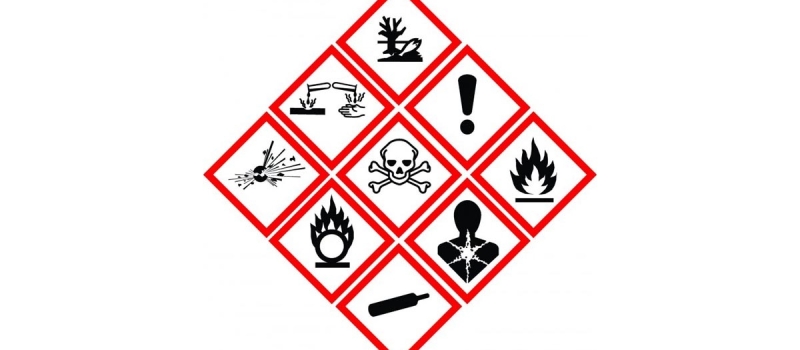Chemical Safety
Monday, July 26, 2021 Tiffany Bartz

Chemicals are routinely relied upon to complete numerous manufacturing processes. Every facility that utilizes chemicals has hazards that are unique to the classification of chemicals that are used on-site. However, every facility can follow the same preventative measures to ensure that their employees and the facility are safe.
Each chemical has a set of hazards that can be found on the safety data sheet (SDS). Having a professional experienced with reviewing SDSs will ensure that the all the hazards are identified and that the appropriate measures will be taken to abate the hazards. Having a standard operating procedure (SOP) for each chemical (or group of similar chemicals) will identify the appropriate personal protective equipment (PPE), safe handling, use and proper disposal.
Practicing good housekeeping is also an important factor in chemical safety. Areas that are prone to spills should have sorbent materials, containment trays and/or non-slip mats to reduce slip and fall injuries. Providing appropriate receptacles for waste near the work area reduces clutter. Having adequate storage such as chemical cabinets where the chemicals are used will reduce the likelihood of having unused chemicals being placed in high-risk areas. Ensuring that employees are cleaning the work area regularly and at the end of each shift will reduce worker exposure from surface contamination.
Storage areas for new chemicals and wastes should be organized efficiently. Often placing one employee in charge of an area will assist in reducing hazards. Making sure that inventories are regularly maintained helps with on time delivery and assures that expired chemicals are disposed of in a timely manner. The storage specifications for each chemical should be adhered to (flammables need to be grounded; oxidizers should not be stored near flammables etc.).
Having a spill response plan is a requirement at any facility that utilizes chemicals. A good spill response plan should address spill prevention, containment procedures how and when to evacuate, emergency response and when to report a spill to authorities. Employees should be properly trained. Regular drills will help reinforce training and identify gaps. Spill kits should have the appropriate materials for containment and should be located so that they are easily accessible in high-risk areas.
Signs in storage areas can reinforce handling, use and disposal methods. Proper labeling on all containers should be maintained to prevent accidents or confusion. Safety showers, eyewash stations, fire extinguishers and first aid kits should be readily accessible in high-risk areas in case of an emergency.
Chemical awareness training should be given to all employees at the start of employment. Training should include the location of SDSs, proper chemical handling, labeling, PPE requirements, proper hygiene, and waste handling procedures. Training and chemical handling awareness should be a regular ongoing activity.
Accidents caused by improper chemical storage can be prevented. Every facility has its own set of chemical awareness challenges and addressing known hazards and anticipating new ones will help minimize chemical exposure and ensure a safe workplace.




